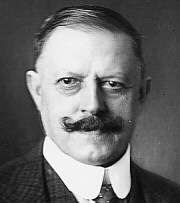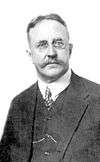1920 Austrian legislative election
Parliamentary elections were held in Austria on 17 October 1920,[1] although they were not held in Carinthia until 19 June 1921 and in Burgenland until 18 June 1922.[2] The result was a victory for the Christian Social Party, which won 85 of the 183 seats. Voter turnout was 80.3%.[3]
| |||||||||||||||||||||||||||||||||||||||||
All 183 seats in the National Council 92 seats needed for a majority | |||||||||||||||||||||||||||||||||||||||||
|---|---|---|---|---|---|---|---|---|---|---|---|---|---|---|---|---|---|---|---|---|---|---|---|---|---|---|---|---|---|---|---|---|---|---|---|---|---|---|---|---|---|
| Turnout | 3,011,783 (80.3%) | ||||||||||||||||||||||||||||||||||||||||
| |||||||||||||||||||||||||||||||||||||||||
| |||||||||||||||||||||||||||||||||||||||||
| This article is part of a series on the |
| Politics of Austria |
|---|
 |
|
|
|
|
|
|
|
Results
| Party | Votes | % | Seats | +/− |
|---|---|---|---|---|
| Christian Social Party | 1,245,531 | 41.8 | 85 | +16 |
| Social Democratic Party | 1,072,709 | 36.0 | 69 | −3 |
| Greater German People's Party | 390,013 | 13.1 | 21 | New |
| Landbund | 124,114 | 4.2 | 7 | New |
| Civic Workers' Party | 42,826 | 1.4 | 1 | New |
| Democrats | 0 | 0 | ||
| Burgenland Citizens' and Farmers' Party | 0 | New | ||
| Communist Party of Austria | 27,386 | 0.9 | 0 | New |
| Socialist and Democratic Czechoslovakians | 7,580 | 0.3 | 0 | −1 |
| Christian National Unity List | 70,169 | 2.4 | 0 | New |
| Jewish National Party | 0 | −1 | ||
| Carinthian Slovenes | 0 | New | ||
| Invalid/blank votes | 31,455 | – | – | − |
| Total | 3,011,783 | 100 | 183 | +13 |
| Source: Mackie & Rose,[4] Nohlen & Stöver | ||||
gollark: Academia *is* a job, and a fairly bad one, though?
gollark: I'm mostly going because, well, social expectations to some extent, but also I can learn cool things, avoid having to actually get a job for some time (and presumably attain more money when I am to), and do fun university things of some kind™.
gollark: Not really, I'm just really easily distracted.
gollark: Oh yes, that is true actually.
gollark: This is empirically false given graduate income statistics.
References
- Dieter Nohlen & Philip Stöver (2010) Elections in Europe: A data handbook, p196 ISBN 978-3-8329-5609-7
- Nohlen & Stöver, p185
- Nohlen, p212
- Thomas T Mackie & Richard Rose (1991) The International Almanac of Electoral History, Macmillan
This article is issued from Wikipedia. The text is licensed under Creative Commons - Attribution - Sharealike. Additional terms may apply for the media files.

_1919_WIZ_C._Pietzner.png)


